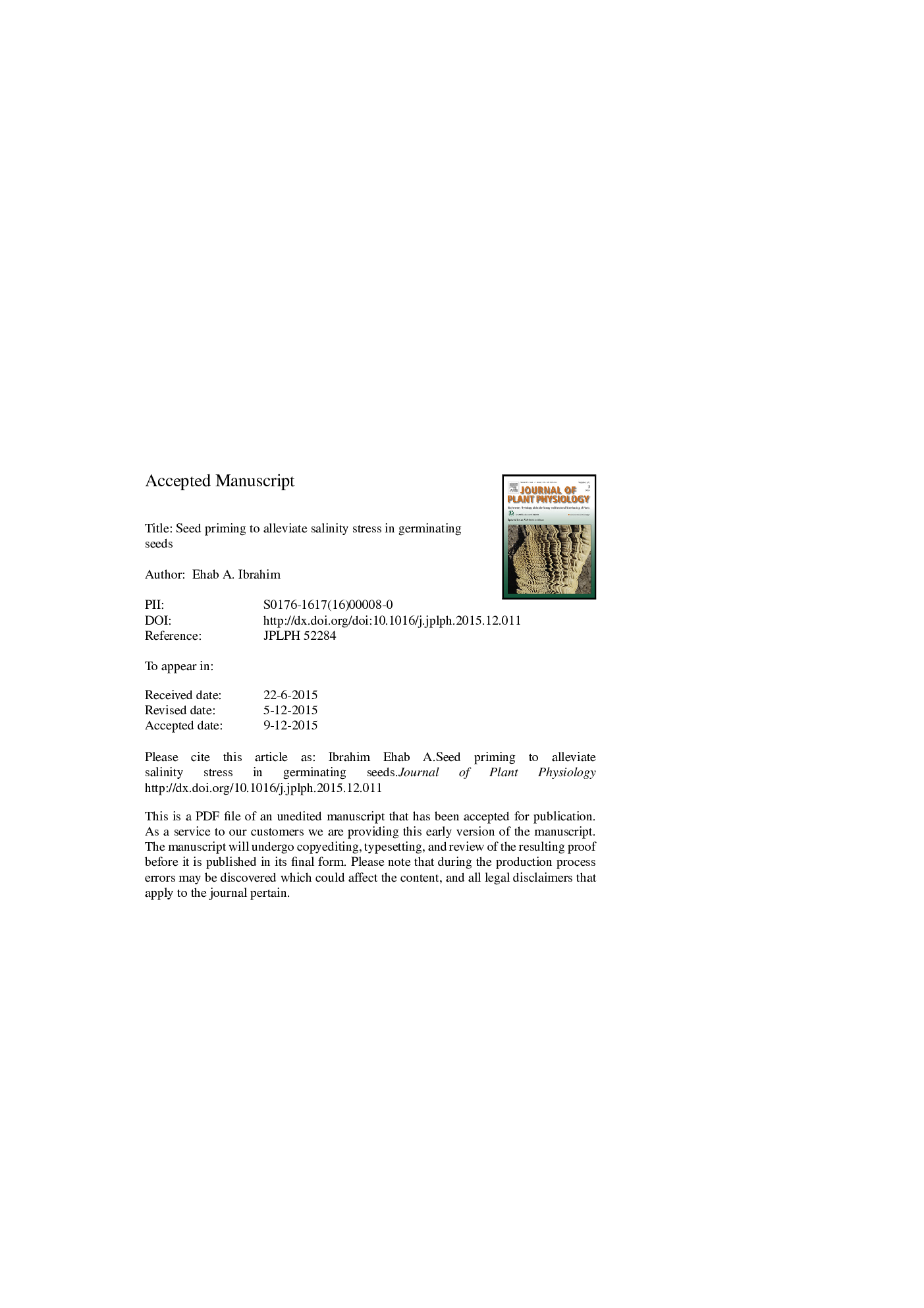| Article ID | Journal | Published Year | Pages | File Type |
|---|---|---|---|---|
| 8387246 | Journal of Plant Physiology | 2016 | 43 Pages |
Abstract
Salinity is one of the major abiotic stresses that affect crop production in arid and semiarid areas. Seed germination and seedling growth are the stages most sensitive to salinity. Salt stress causes adverse physiological and biochemical changes in germinating seeds. It can affect the seed germination and stand establishment through osmotic stress, ion-specific effects and oxidative stress. The salinity delays or prevents the seed germination through various factors, such as a reduction in water availability, changes in the mobilization of stored reserves and affecting the structural organization of proteins. Various techniques can improve emergence and stand establishment under salt conditions. One of the most frequently utilized is seed priming. The process of seed priming involves prior exposure to an abiotic stress, making a seed more resistant to future exposure. Seed priming stimulates the pre-germination metabolic processes and makes the seed ready for radicle protrusion. It increases the antioxidant system activity and the repair of membranes. These changes promote seed vigor during germination and emergence under salinity stress. The aim of this paper is to review the recent literature on the response of plants to seed priming under salinity stress. The mechanism of the effect of salinity on seed germination is discussed and the seed priming process is summarized. Physiological, biochemical and molecular changes induced by priming that lead to seed enhancement are covered. Plants' responses to some priming agents under salinity stress are reported based on the best available data. For a great number of crops, little information exists and further research is needed.
Related Topics
Life Sciences
Agricultural and Biological Sciences
Agronomy and Crop Science
Authors
Ehab A. Ibrahim,
